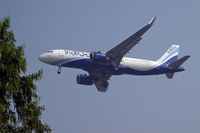After a five-year freeze marked by pandemic shutdowns and tense border standoffs, direct flights between India and China are set to soar once again by the end of October 2025. The move, announced by both governments and welcomed by major airlines, is being hailed as a significant—if cautious—step towards normalizing relations between the world’s two most populous nations. It’s not just about planes in the sky; it’s about people, trade, and the slow, careful mending of a relationship battered by both global and local storms.
India’s embassy in China broke the news on October 2, 2025, via the Chinese social media platform WeChat, confirming that flights between designated cities would resume by late October, though the final schedule would depend on commercial carriers’ decisions. The embassy described the move as part of India’s “approach towards gradual normalization of relations between India and China,” a sentiment echoed by both governments in recent weeks.
IndiGo, India’s largest airline, wasted no time in expressing its willingness to restart operations. On October 2, the carrier announced it would resume daily non-stop flights from Kolkata to Guangzhou beginning October 26. According to a statement from IndiGo, the flights will “reestablish avenues for cross-border trade and strategic business partnerships and promote tourism between the two nations.” The airline also revealed plans to launch a second direct route from New Delhi to a yet-to-be-confirmed Chinese city, pending regulatory approvals. Air India, meanwhile, is aiming to resume nonstop flights between Delhi and Shanghai by the end of the year, as reported by Indian media outlets.
China’s Guangzhou Baiyun International Airport, in a statement on October 3, confirmed the resumption of direct flights and indicated that it would actively promote new routes, including a possible Guangzhou-Delhi connection. “In the future, Guangzhou Baiyun Airport will also actively promote airlines to open direct routes such as Guangzhou and Delhi,” the airport stated, marking the first official comment from Chinese authorities on the move.
This resumption of air travel is more than a logistical update; it’s a diplomatic signal. The thaw comes after Indian Prime Minister Narendra Modi’s high-profile visit to China on August 30, 2025, his first in seven years. Modi attended the Shanghai Cooperation Organisation (SCO) summit, where he met with Chinese President Xi Jinping. The two leaders publicly agreed that India and China are “development partners, not rivals,” and discussed ways to strengthen trade ties amid a global climate of tariff uncertainty.
The backdrop to these warming ties is anything but simple. The United States, under President Donald Trump, has ramped up economic pressure on both Asian giants. In September 2025, Trump imposed a steep 50 percent tariff on Indian imports, citing India’s continued purchases of Russian oil, and called on the European Union to slap 100 percent tariffs on both China and India. According to Reuters, these moves have injected fresh urgency into the India-China dialogue, as both nations seek to cushion their economies against unpredictable global headwinds.
Yet, it’s impossible to ignore the shadow of 2020—a year that saw relations between India and China plummet to their lowest point in decades. That June, troops from both sides clashed along the disputed Himalayan border, resulting in the deaths of 20 Indian and four Chinese soldiers. The violence, the worst since the 1960s, froze high-level political engagement and led to a military standoff that lasted years. Direct flights, which had already been suspended due to the COVID-19 pandemic, never resumed—until now.
Despite the long freeze, economic interdependence between the two countries never truly vanished. China remains India’s largest bilateral trade partner, though the trade deficit—now nearing $99.2 billion according to India’s foreign ministry—remains a sticking point. In his recent meeting with Xi Jinping, Modi raised concerns about this widening gap and emphasized the importance of maintaining peace and stability along the contested border. “This agreement of the civil aviation authorities will further facilitate people-to-people contact between India and China, contributing towards the gradual normalization of bilateral exchanges,” an Indian government statement noted.
Observers point out that the resumption of flights is as much about symbolism as substance. It signals a willingness on both sides to move beyond the bitterness of recent years, even if only incrementally. The Indian Ministry of External Affairs emphasized that all new flights would be subject to “commercial demand and operational criteria,” a nod to the cautious approach both governments are taking. “The flights are expected to boost people-to-people exchanges and pave the way for a gradual normalisation of ties,” the ministry stated.
There are also religious and cultural dimensions to this reopening. In June 2025, Beijing granted permission for Indian pilgrims to trek to Mount Kailash in Tibet—a holy site for Hindus and Buddhists—for the first time since the 2020 border clashes. It was a small but meaningful gesture, hinting at a broader willingness to restore links severed by years of mistrust.
For the aviation industry, the move is a welcome shot in the arm. IndiGo, in particular, stands to benefit as the first carrier to restart direct routes, with Air India likely to follow. The opening of these air corridors is expected to facilitate not only business and tourism but also academic and cultural exchanges, which had been severely curtailed by the pandemic and political tensions.
Still, challenges remain. The border dispute is far from resolved, and both sides continue to maintain a heavy military presence in the Himalayan region. The trade deficit persists, and the global economic environment remains volatile, with US tariff threats looming large over both economies. But for now, the resumption of flights represents a hopeful—if tentative—step forward.
As the first IndiGo flight takes off from Kolkata bound for Guangzhou on October 26, it will carry more than just passengers. It will carry the weight of history, the promise of renewed connections, and the cautious optimism of two nations learning, once again, to look each other in the eye and move forward.






